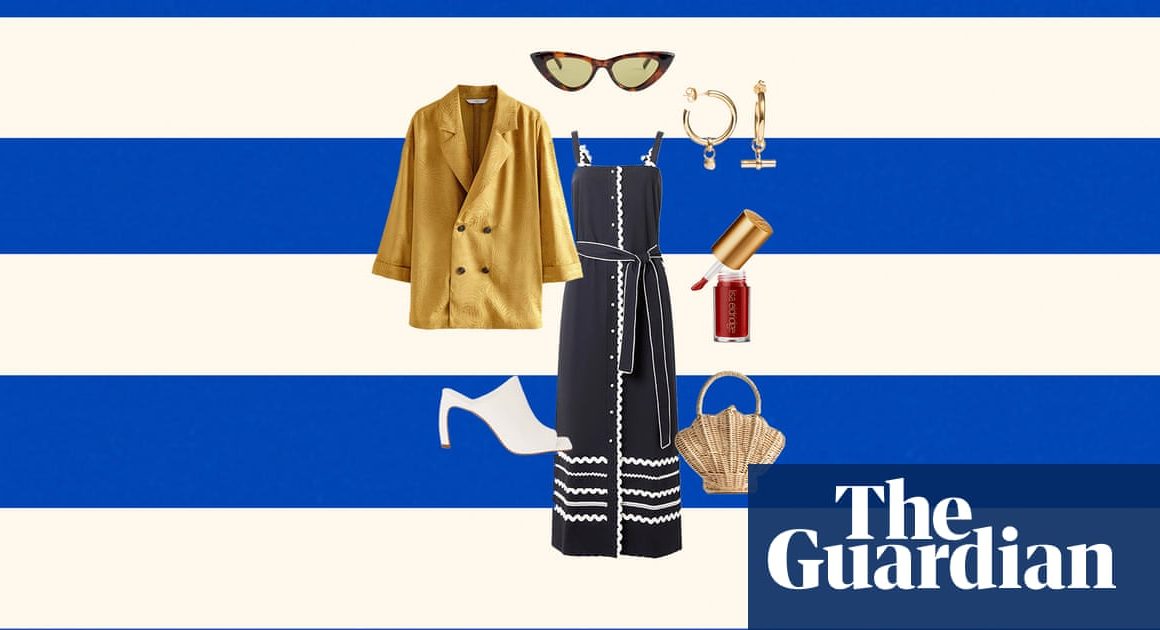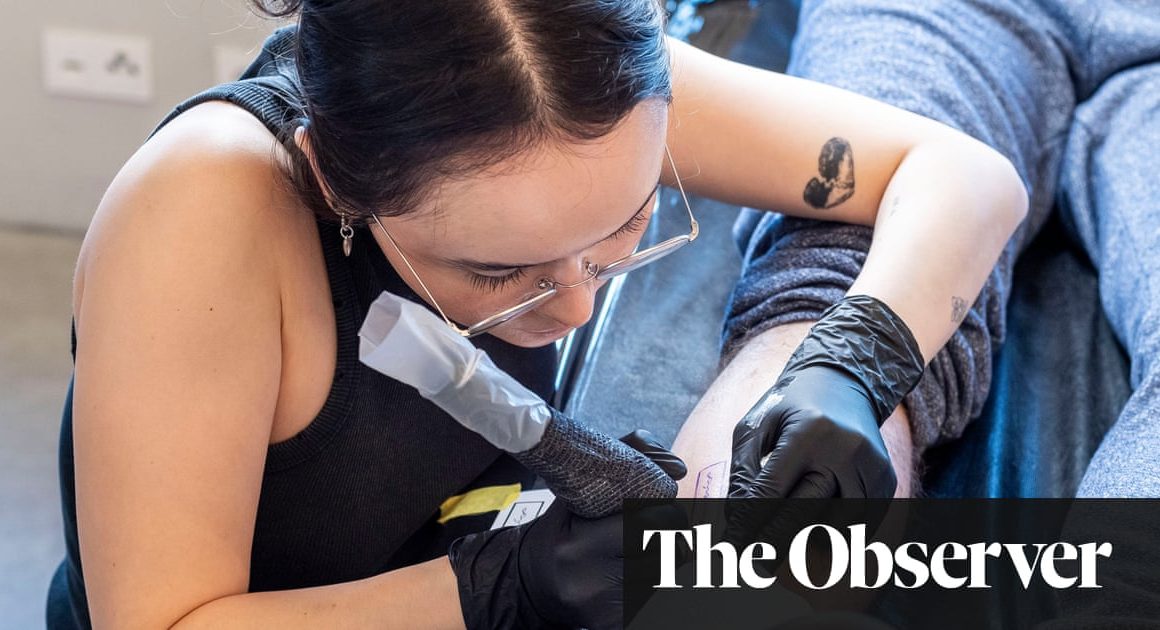The art direction and photographs of Oliviero Toscani were provocative not for what they showed – real life, he said, complex and contradictory – but where they were seen. The images, subjects ranging from a bloodied newborn baby to the condemned of death row, would have been unremarkable on the editorial pages of a classic photo-reportage publication such as Life or Paris Match. But they sprang out of the safe spaces reserved for prestige adverts at the front of fashion magazines, or were pasted up on big billboards.
Toscani, who has died aged 82, regarded advertising as the most powerful medium, and claimed an artist’s right, like Michelangelo, to express his ideas in it. Like Michelangelo, he had a patron of papal benevolence, Luciano Benetton, who paid for the spaces where Toscani’s creations were seen. Benetton had co-founded a family firm that evolved into a company making mid-price fashion knit separates, with an international chain of shops. He wanted advertising that promoted an ethos for the brand, and in 1982 recruited Toscani as art director.
Toscani already had a reputation for sheer cheek in fashion photography. In 1971, the Jesus Jeans company – its name a deliberate affront in an Italy where the Catholic church dominated public morality – hired him for a campaign to illustrate slogans that subverted Christian sayings. He superimposed the words “If you love me, follow me” on his close-up pic of his girlfriend’s backside, clad in jeans cut off short to expose chunks of buttock. After the posters went up, carabinieri were sent in to break up the protests.
Toscani’s early work for Benetton was gentler, though. Unusually for the era, the company designed fashion for men, women and children, and its very Italian ideal was a family group all clad in co-ordinated, paintbox-coloured, Benetton. Toscani extended that concept into a “family of man” theme in 1984, assembling young models from the wider range of ethnicities available in the fashion business since the 1970s, and pushed that further by casting amateurs from many countries and cultures. Whole villages, including mafia-haunted Corleone in Sicily, posed in Benetton knits. A Toscani-directed Benetton ad was benign globalisation – equality through clothing, made in Italy, that suited everyone everywhere. No captions, just a small green balloon with the Benetton name, logo, and the words “All the colours in the world”. Later the firm renamed itself United Colors of Benetton.
But the advertising still showed the products, never satisfying to Toscani. His education had been in tougher photographs. He was born in Milan, to Dolores (nee Cantoni) and her husband Fedele Toscani, a Corriere della Sera photojournalist of the hardest school, his most famous image the hanging corpses of Mussolini and his mistress. Toscani acted as his father’s lab assistant and messenger, and recalled how his schoolteacher once read a newspaper with a picture on the front page he had personally delivered to the paper’s offices the previous day; the boy thought, “he knows everything one day later than me”.
The confidence that training gave Toscani led him to an art and design college in Zurich, Switzerland, then into art direction, and fashion photography, which in Italy in the 60s was a relatively new field. When it took off, its imagery came from different sources – high art and low realism – and went in different directions, especially social and political protest, than such work elsewhere. Toscani contributed pictures to Vogue Italia of the late 60s and 70s, which was like no other Vogue – it considered political provocation molto elegante.
The Benetton company in the 80s was so successful that the clothes almost sold themselves. Toscani thought they no longer needed to appear in the ads – “Selling jumpers is the company’s problem, not mine” – and that the expensive page, wall and television screen space they occupied could be better employed to show life itself, with an occasional inflammatory joke, such as actors cast as a nun and a priest kissing.
From 1990, Luciano Benetton gave Toscani licence to fill those spaces how he wanted, retaining only the Benetton label in a corner, as sponsor. Toscani stared directly and hard at the sex and death often present, but only allusively, in advertising: he featured an abstract of coloured condoms, an interracial lesbian couple with their adopted baby, a graveyard of the Gulf war, a pieta of the death of the Aids victim David Kirby. The pictures were meant to surprise. They shocked, and divided opinion, which made for major publicity.
In 1991 Luciano Benetton also sponsored Toscani, along with the graphic designer Tibor Kalman, to launch a quarterly magazine, COLORS, published until 2014 in six languages and 20 countries, and full of challenging subjects and images. Its creators’ belief in the beauty to be found in everyday global reality had a strong effect on a last generation of magazines. In 1995, Benetton also sponsored Fabrica, a Toscani-headed creative education centre in the Benetton home town, Treviso.
Toscani seemed to have mellowed out of extreme outrage – in a 1998 catalogue called Enemies, the geopolitical content was merely Israelis and Palestinians photographed agreeably together, wearing Benetton. But in 2000 he produced a 96-page booklet, distributed in an issue of Tina Brown’s glossy Talk magazine, with his own portraits of death row inmates in US jails, plus interviews. There was a discreet direction to Benetton’s website on its last page.
The resulting furore caused the Benetton firm, already changing direction as it lost out to international fast-fashion enterprises, to dismiss Toscani. He did not return until Luciano Benetton, intent on revitalising the brand, invited him back in 2017. The family enterprise had meanwhile widely diversified, and controlled a company managing and maintaining Italy’s toll roads, including the Moranti Bridge, in Genoa, which collapsed in 2018, killing 43. During a live radio conversation about the Fabrica centre, Toscani was questioned over the tragedy, and answered: “But what difference does it make if a bridge falls down?” He later apologised, but this ended his Benetton career.
Toscani’s third wife, Kirsti Moseng, and their children, Rocco, Lola, and Ali, survive him. Two earlier marriages ended in divorce. With his first wife, Brigitte, he had a son, Alexandre; from his second marriage, to Agneta Holst, he had two daughters, Sabina and Olivia.












